- Home
- Alison Weir
The Lost Tudor Princess Page 8
The Lost Tudor Princess Read online
Page 8
Henry was not well disposed toward the Howards in the wake of Anne Boleyn’s fall; her mother had been Thomas’s niece, and the Howards had always been seen very much as major players in her faction. Norfolk himself, presiding at Anne’s trial, had wept as he pronounced sentence, but he was out of favor, and had he wished to intercede for his brother, he was in no position to do so.31 It has been credibly suggested32 that he exposed Thomas’s precontract with Margaret to the King in an attempt to demonstrate that his loyalty to his sovereign was greater than his loyalty to his family. He may also have reasoned that reporting the matter, or his suspicions, would preempt anyone else from doing so and implicating him. His daughter Mary was Margaret’s friend and had been an accomplice in the affair, and he would have wanted to deflect the King’s wrath from her—and himself. Moreover, his family might benefit from Margaret’s disgrace, for Mary Howard was married to Henry VIII’s bastard son, Richmond, and in the wake of the Princess Elizabeth being disinherited, there was a possibility that Richmond would be legitimated and declared Henry’s successor, which might make Mary Howard queen one day. Margaret Douglas, though, indisputably had a better claim, so if Henry could be persuaded to disinherit her, the way would be clear for Richmond—unless, of course, Queen Jane bore a son. But Norfolk, normally no fool, might have anticipated that reporting his brother’s folly would put the Howards in worse odor, and give rise to even greater suspicions in the King’s mind. It has also been suggested that Henry suspected Norfolk of encouraging the romance to further his own ambitions.33
Informed of what had been going on behind his back, Henry VIII was “much incensed at conceiving that one so joined in blood to him and his nephew, the Scottish King, should not be given nor taken without his consent, especially when she lived so near him.”34 He was enraged at Thomas’s presumption, and not only bitterly disappointed in his niece, having cherished such a high opinion of her, but furious at her for promising herself without his permission and depriving him of the opportunity of marrying her off to his advantage.
But that was the least of it. The clandestine love affair now assumed a sinister significance in Henry’s mind.35 Ever paranoid about treason, especially in the wake of recent events, he conceived “certain suspicions” that Thomas Howard, uncle of the late executed Queen, had been aspiring to the crown, backed by his powerful family.36 In the words of the Act of Attainder shortly to be passed against Thomas,
it is vehemently to be suspected and presumed that the said Lord Thomas falsely, craftily and traitorously both imagined and compassed that, in case our sovereign lord should die without heirs of his body, which God defend, the said Lord Thomas, by reason of marriage in so high a blood, and to one such which pretendeth to be lawful daughter to the Queen of Scots, should aspire by her to the dignity of the imperial crown of this realm, or at the least making division for the same by all likelihoods, having a firm hope and trust that the subjects of this realm would incline and bear affection to the said Lady Margaret, being born in this realm, and not to the King of Scots, her brother, to whom this realm hath nor ever had any affection, but would resist his attempt to the crown to the uttermost of their powers.
Howard was also deemed guilty of “maliciously and traitorously minding and imagining to put division in this realm,” and of deliberately subverting the Act of Succession.37
Nine years earlier Henry had castigated Margaret Tudor for compromising her daughter’s legitimacy; now—perhaps influenced by Norfolk—he was accusing Margaret of pretending to be Margaret Tudor’s legitimate daughter, and was to have her described as the “natural daughter to the Queen of Scots” in Thomas Howard’s attainder.38 He was making it plain that there was now no question of her deserving a place in the succession.39
Henry had good reason for suspecting Thomas Howard’s motives, and for wishing to impugn Margaret’s legitimacy, because Thomas’s betrothal to her looked all the worse for being discovered at a time when the problem of the succession was more pressing than ever. Thomas had entered into the precontract after May 17, when the Princess Elizabeth had been pronounced a bastard, and upon that pronouncement he would have realized that Margaret now had realistic hopes of the succession. He could also have envisioned his marriage to her as a means of restoring the Howards to power, reviving the Roman faith—the Howards were (and still are) England’s premier Catholic peers—and aspiring to the crown, eventualities that would have given the paranoid Henry VIII nightmares. It may be that all these possibilities had occurred to Thomas, although the evidence strongly suggests that his precontract with Margaret was founded upon love as well as ambition. Even so, it was breathtakingly rash of him to venture so far.
It is possible that the King knew about the precontract by July 4, when Parliament passed the new Act of Succession. His unwillingness to name a successor40 may have been prompted by his suspicions about Thomas Howard’s pretensions.
On July 8, 1536, Thomas was imprisoned in the Tower “for making a privy contract of matrimony between the Lady Margaret Douglas and him,”41 and examined by Sir Thomas Wriothesley, a clerk of the signet in Thomas Cromwell’s service. That day John Husee informed Lady Lisle that “the lord Thomas [was] examined [on] how long he hath loved the Lady Margaret,” and that he had answered, “About a twelvemonth.” When asked what love tokens he had given her in that period, he replied, “None but a cramp ring.” What tokens had he received from her? “None but her physiognomy, painted, and a diamond.” He was asked “when the first communication was of the contract,” and said, “Only since Easter.” Wriothesley wanted to know who knew of the precontract; Thomas said he had heard that on the day after they had become sworn to each other, Margaret had confided in Margaret Gamage, the wife of Lord William Howard, while he himself had “lately told it to Hastings, his mother’s servant.”42
The mention of Lord William Howard, Thomas’s older brother, may have led Henry to suspect his sister, Queen Margaret, of encouraging the affair for her own sinister purposes. Up till May, Howard had been on an embassy to Scotland to arrange a meeting between Henry VIII and James V, and had been in contact with Margaret Tudor.43 Had he told her of the affair between his brother and her daughter? No charges were ever laid against him, nor was he even questioned, but the King convinced himself that Queen Margaret had furthered the relationship. He was entertaining a “vehement suspicion” of her “traitorous intent,” for people were saying that she had plotted to come to England to be reconciled with Angus, intending “by all vehement presumptions and likelihoods to advance the said Lord Thomas and the said Lady Margaret into the favor of the people of this realm, by reason whereof the traitorous intent of the said Lord Thomas might the sooner be brought to pass.”44 We hear no more of this, so the King must have persuaded himself that his suspicions were unfounded. It would soon become clear that Queen Margaret knew nothing of her daughter’s romance.
—
Margaret was evidently aware of Thomas’s arrest, because she told Thomas Smyth, who may have been one of Howard’s servants, about the clandestine betrothal and warned him that he might be questioned as to what he knew.45 But time was running out. Not long after Thomas had been taken there46—probably hours later, on July 8—Margaret too was apprehended and imprisoned in the Tower. This was done so discreetly that no one knew where she had gone; on July 23, Chapuys was to report that “the Princess [sic], however, since the discovery, has entirely disappeared from court, and no one knows whether she is in the Tower, or some other prison.”47 In August it would be reported in Venice that she was indeed in the Tower.48
Her arrest plunged her into turmoil. She later recalled how “much our fortunes we [she and Howard] both did lament. I mourned that I by fantasy was led, and yet from my love I could not recoil.” Despite her uncle’s displeasure, “true love fought still my days to foil, but love of my love prepared the spoil.”49
It is clear from a letter that Margaret wrote to Cromwell in August (see below) that, as the King’s niece, s
he was held in the Tower in some comfort and allowed privileges. It has been stated50 that she was confined in the Lieutenant’s Lodging (the present-day Queen’s House), overlooking Tower Green, but that house was in a ruinous condition in 1539 and in danger of falling down,51 so this is unlikely. Anne Boleyn had been imprisoned in the Queen’s lodgings, and it is possible that Margaret was also held there, or—although this is less likely—on the upper floor of the Bell Tower, where her cousin, Katherine Grey, would be imprisoned in the 1560s. The Bell Tower adjoined the Lieutenant’s Lodging and could only be accessed through it, so it was ideal for high-security prisoners like errant royals.
Two witnesses were examined by Wriothesley on July 9. Husee reported that one John Ashley,52 asked how long he had known of any “love between the Lady Margaret and the Lord Thomas,” said he had been aware of “love between them” for about three months. Thomas Smyth said the same. This was at variance with Thomas’s statement that they had been in love for a year, and testifies to the couple having successfully maintained discretion for nine months. Smyth insisted that he never carried any tokens between them and was never taken into the confidence of either Margaret or Thomas, nor did he know or suspect anyone of being privy to what was going on, except for her women. Asked when he first knew that there was a contract, he said that Margaret had told him “yesterday,”53 saying she expected to be examined about it. Smyth said he had seen Thomas visit her many times when the Duchess of Richmond was present; Thomas would watch until Lady Boleyn had gone away, then steal into Margaret’s chamber. Smyth stated that he had been there with Thomas “sundry times,” but never heard a precontract mentioned.54 Both Thomas and Margaret made it clear that the Duchess of Richmond knew nothing of their precontract, so she escaped censure.55
It was not treason for a man to precontract himself to the King’s niece; there was no law forbidding it.56 That, in the circumstances, needed rectifying. On July 18 the matter was debated in Parliament, in which the Lords and Commons made “humble intercessions” that the offense be deemed high treason, upon which was passed the Act of Attainder before-mentioned, in which it was laid down that “the Lord Thomas Howard, being led and seduced by the Devil, not having God afore his eyes, nor regarding his duty of allegiance that he oweth to have borne the King, our and his most dread sovereign lord, hath now lately, within the King’s own court and mansion palace at Westminster [i.e. Whitehall], his Majesty being there for affairs of his Parliament, without the knowledge or assent of our most dread sovereign lord the King, contemptuously and traitorously contracted himself, by crafty, fair and flattering words, to and with the Lady Margaret Douglas.” For this he was sentenced to “suffer such pains and execution of death as in cases of high treason.”
The Act—the first ever to legislate on royal marriages—also laid down
that if any man of what estate, degree or condition soever he be, at any time hereafter, take upon him to espouse, marry or take to his wife any of the King’s children (being lawfully born or otherwise commonly reputed or taken for his children), or any of the King’s sisters or aunts of the part of the father, or any of the lawful children of the King’s brothers or sisters, or contract marriage with any of them, without the special licence, assent and agreement first thereunto had and obtained of the King’s Highness in writing under his Great Seal, or defile or deflower any of them not being married, shall be deemed and adjudged a traitor to the King and his realm. And be it enacted that the woman so offending shall incur like danger and penalty, and shall suffer such-like death and punishment as appointed to the man offending.57
To this Act Henry VIII gave his assent, effectively sentencing his niece to death. She and Thomas stood condemned under a statute that had not been in force when they had committed what was only now legally an offense.
Margaret stood in the greatest jeopardy. On July 23, Chapuys informed Charles V:
Parliament finished on Tuesday, and the appointment of the successor to the Crown has remained in blank, and entirely at the King’s will. The same Parliament has condemned to death the younger brother of the Duke of Norfolk for having tried in the presence of witnesses to contract a marriage with the daughter of the Queen of Scotland by the Earl of Angus, a statute having since been made and promulgated condemning to death as traitor whoever should, without the King’s sanction, treat of marriage with a lady of royal blood, ordering also that, should the lady herself have consented, she should likewise incur pain of death.58
Margaret had some days in which to agonize over the prospect of dying a hideous death, at just twenty years old, for the crime of having fallen in love. She can have been under no illusions as to what she was facing, or that the King would spare her because of their kinship and his former affection for her. That he would send her to the block was all too believable, given that he had recently signed the warrant for his wife, the Queen of England, to be beheaded. And there he had been merciful, for Anne had been sentenced to be burned or beheaded at his pleasure, burning being the statutory sentence for women convicted of treason. In her anguish, Margaret must have prayed that, if it came to it, he would show the same clemency to her.
The scandal was broadcast all over Europe. On August 17 it was reported in Venice that “the daughter of the Queen of Scotland, the King’s sister, has fallen in love with the Duke of Norfolk’s son, and he with her, and they promised marriage; this was discovered and pronounced treason. He has been condemned to death and she is placed in a tower where they are accustomed to put those discovered in such errors.”59 Reginald Pole, Henry VIII’s cousin, also in Venice, informed Cardinal Contarini on August 31 “that a brother of the Duke of Norfolk, for secretly marrying a daughter of the late [sic] Queen of Scotland, the King’s sister, has been condemned to death along with his wife, unless the judgment be mitigated by the King’s clemency.” Pole rather thought “that in these cases the King wishes an opportunity of showing mercy, and that is why judgment has been passed on them; for their deaths would be so unjust as to create intolerable hatred” since they had been condemned only on a law passed after their offense had been committed.60
It is unlikely that Henry ever meant to execute a niece of royal blood who was close to the throne and could be advantageously married—and of whom he had until now been fond. He had proceeded against her in the white heat of his anger, probably to frighten her, and as a warning to others; but Margaret had no means of knowing how the King’s mind worked. Small wonder that she would later recall how deeply “mine uncle’s displeasure did grieve me.”61 Reginald Pole may have been right in deducing that the King had meant all along to show mercy. There was, after all, no proof that there ever had been a conspiracy. In the end Henry did not demand Margaret’s head, or even Thomas Howard’s. On July 23, Chapuys reported that Margaret, “for the present, has been pardoned her life considering that copulation had not taken place.”62 This had apparently been due to the intercession of Thomas Cromwell,63 to whom either Margaret or Thomas must have offered this information in their defense. The King contented himself with keeping the couple in prison, having perhaps chosen to see his niece as the passive offender, seduced into making a precontract with an ambitious villain. Now, Margaret would recall, “Patience gave charge I should be content [and] in my distress with hope did me touch.”64
Chapuys observed, with some sympathy, of “the Princess of Scotland”: “Certainly if she had done much worse, it seems to me that she still deserved pardon; for, after all, she has witnessed and is daily witnessing many examples of that in her own domestic circle, and besides that she is said to have attained marriageable life more than eight years ago.” He added that “the King is very much annoyed at his niece’s marriage, the more so that he has no hope of the Duke of Richmond, whom he certainly intended to be his heir and successor, living long; so fully did he mean this, that, had he [Richmond] not fallen ill, he would have had him proclaimed by Parliament.”65 This strongly suggests that Henry had been thinking of naming Margaret his
successor. Richmond died of an acute pulmonary complaint on the day after Chapuys wrote his report; his death and Margaret’s disgrace left the King with no designated heir.
Most prisoners of rank were attended by servants, and had to pay for the privilege, but Margaret was dependent on the King, who was footing the bill for hers; he had also heard that she had too many visitors—another privilege of high-status prisoners—and ordered Thomas Cromwell to write reproving her. On August 12 a thoroughly chastened Margaret—no longer the headstrong girl of a few weeks before—wrote to Cromwell from the Tower. It is the first of her letters to survive:
My lord,
What cause have I to give you thanks, and how much bound am I unto you, that by your means hath gotten me, as I trust, the King’s Grace his favour again; and, besides that, that it pleaseth you to write and to give me knowledge wherein I might have his Grace’s displeasure again, which I pray our Lord sooner to send me death than that; and I assure you, my lord, I will never do that thing willingly that should offend his Grace.
And, my lord, whereas it is informed you that I do charge the house with a greater number than is convenient, I assure you I have but two more than I had in the court, which, indeed, were my Lord Thomas’s servants; and the cause that I took them for was for the poverty that I saw them in, and for no cause else. But seeing, my lord, that it is your pleasure that I shall keep none that did belong unto my Lord Thomas, I will put them from me.
Whatever her inward hopes, she felt it politic to make it plain that there was no risk of her cherishing feelings for Thomas Howard:
And I beseech you not to think that any fancy doth remain in me touching him, but that all my study and care is how to please the King’s Grace and to continue in his favor.

 Richard III and the Princes in the Tower
Richard III and the Princes in the Tower Britain's Royal Families: The Complete Genealogy
Britain's Royal Families: The Complete Genealogy The Lady in the Tower: The Fall of Anne Boleyn
The Lady in the Tower: The Fall of Anne Boleyn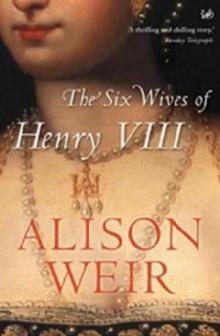 Six Wives of Henry VIII
Six Wives of Henry VIII Elizabeth of York: A Tudor Queen and Her World
Elizabeth of York: A Tudor Queen and Her World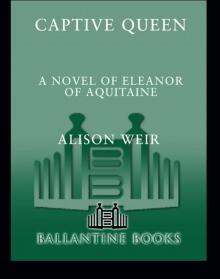 Captive Queen
Captive Queen Innocent Traitor
Innocent Traitor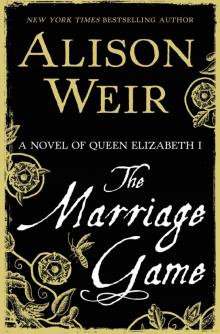 The Marriage Game
The Marriage Game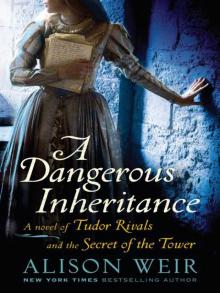 A Dangerous Inheritance
A Dangerous Inheritance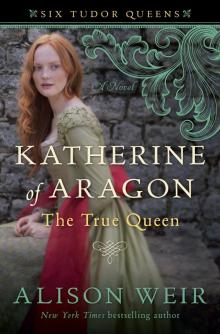 Katherine of Aragón: The True Queen
Katherine of Aragón: The True Queen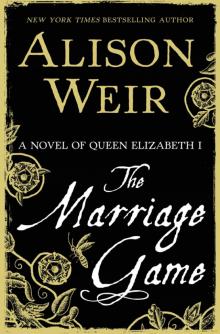 The Marriage Game: A Novel of Queen Elizabeth I
The Marriage Game: A Novel of Queen Elizabeth I Princes in the Tower
Princes in the Tower Anne Boleyn: A King's Obsession
Anne Boleyn: A King's Obsession Traitors of the Tower
Traitors of the Tower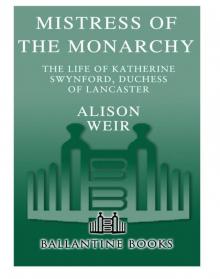 Mistress of the Monarchy: The Life of Katherine Swynford, Duchess of Lancaster
Mistress of the Monarchy: The Life of Katherine Swynford, Duchess of Lancaster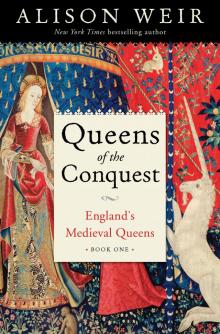 Queens of the Conquest: England’s Medieval Queens
Queens of the Conquest: England’s Medieval Queens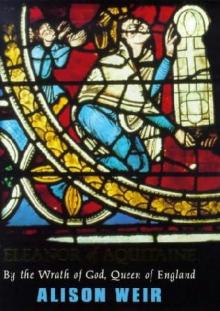 Eleanor of Aquitaine: A Life
Eleanor of Aquitaine: A Life Mary, Queen of Scots, and the Murder of Lord Darnley
Mary, Queen of Scots, and the Murder of Lord Darnley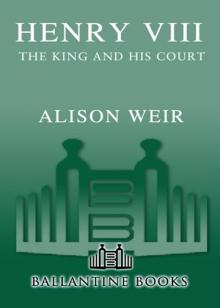 Henry VIII: The King and His Court
Henry VIII: The King and His Court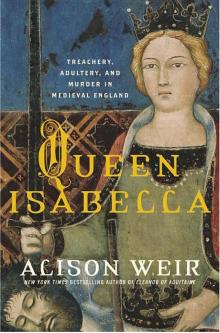 Queen Isabella: Treachery, Adultery, and Murder in Medieval England
Queen Isabella: Treachery, Adultery, and Murder in Medieval England Katheryn Howard, the Scandalous Queen
Katheryn Howard, the Scandalous Queen Arthur- Prince of the Roses
Arthur- Prince of the Roses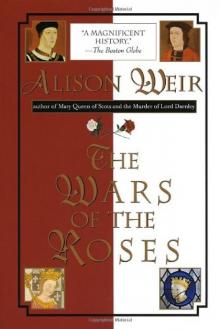 The Wars of the Roses
The Wars of the Roses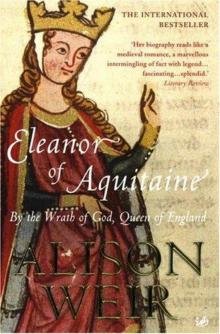 Eleanor of Aquitaine: By the Wrath of God, Queen of England
Eleanor of Aquitaine: By the Wrath of God, Queen of England Mary Boleyn: The Great and Infamous Whore
Mary Boleyn: The Great and Infamous Whore Jane Seymour: The Haunted Queen
Jane Seymour: The Haunted Queen Anna of Kleve, the Princess in the Portrait
Anna of Kleve, the Princess in the Portrait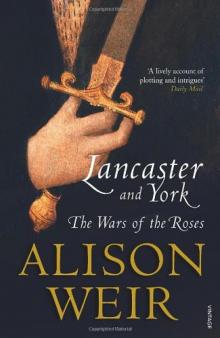 Lancaster and York: The Wars of the Roses
Lancaster and York: The Wars of the Roses The Grandmother's Tale
The Grandmother's Tale The Princess of Scotland (Six Tudor Queens #5.5)
The Princess of Scotland (Six Tudor Queens #5.5)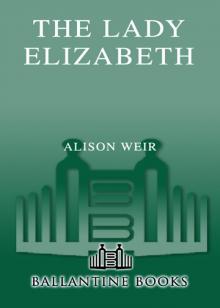 The Lady Elizabeth
The Lady Elizabeth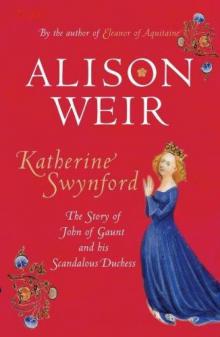 Katherine Swynford: The Story of John of Gaunt and His Scandalous Duchess
Katherine Swynford: The Story of John of Gaunt and His Scandalous Duchess The Curse of the Hungerfords
The Curse of the Hungerfords The Lost Tudor Princess: The Life of Lady Margaret Douglas
The Lost Tudor Princess: The Life of Lady Margaret Douglas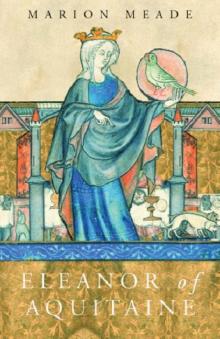 Eleanor of Aquitaine
Eleanor of Aquitaine Mistress of the Monarchy
Mistress of the Monarchy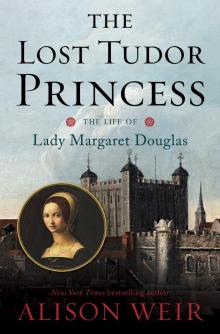 The Lost Tudor Princess
The Lost Tudor Princess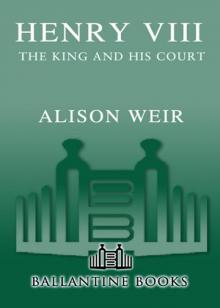 Henry VIII
Henry VIII Anne Boleyn, a King's Obsession
Anne Boleyn, a King's Obsession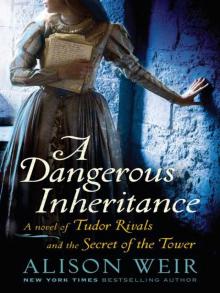 A Dangerous Inheritance: A Novel of Tudor Rivals and the Secret of the Tower
A Dangerous Inheritance: A Novel of Tudor Rivals and the Secret of the Tower Elizabeth of York
Elizabeth of York Katherine of Aragon, the True Queen
Katherine of Aragon, the True Queen Katherine Swynford
Katherine Swynford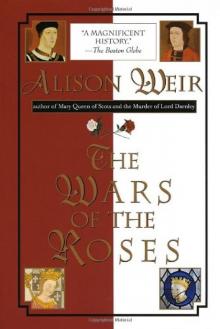 Wars of the Roses
Wars of the Roses Queens of the Conquest
Queens of the Conquest Mary Boleyn
Mary Boleyn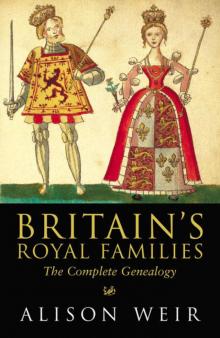 Britain's Royal Families
Britain's Royal Families The Tower Is Full of Ghosts Today
The Tower Is Full of Ghosts Today Life of Elizabeth I
Life of Elizabeth I Anne Boleyn A King's Obssession
Anne Boleyn A King's Obssession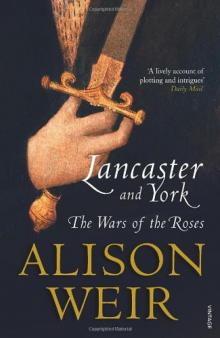 Lancaster and York
Lancaster and York Jane Seymour, the Haunted Queen
Jane Seymour, the Haunted Queen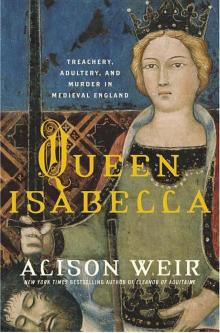 Queen Isabella
Queen Isabella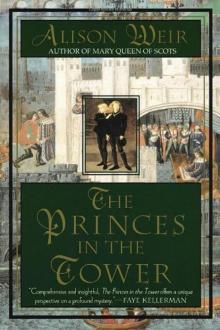 The princes in the tower
The princes in the tower